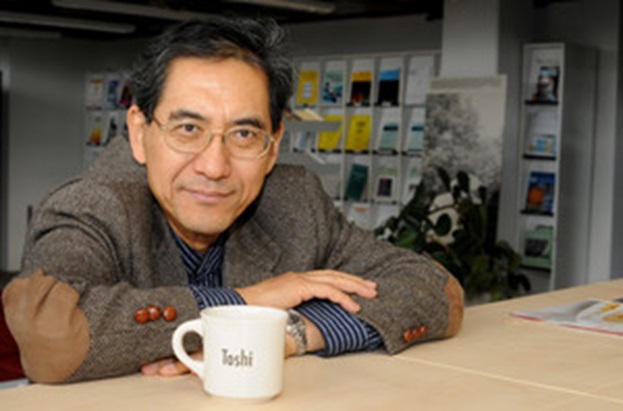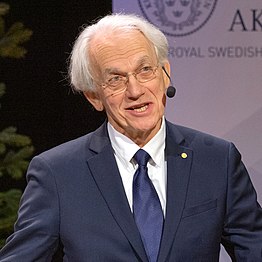The Davis-Besse Nuclear Power Station employs around 650 full-time workers and could close in 2020 if FirstEnergy Solutions decides in June not to move forward with its refueling process. Thenews-messenger.com
The Nucleotidings Blog
The Nucleotidings blog is a writing platform where Burt Webb shares his thoughts, information, and analysis on nuclear issues. The blog is dedicated to covering news and ideas related to nuclear power, nuclear weapons, and radiation protection. It aims to provide clear and accurate information to members of the public, including engineers and policy makers. Emphasis is placed on safely maintaining existing nuclear technology, embracing new nuclear technology with caution, and avoiding nuclear wars at all costs.
Your Host: Burt Webb
Burt Webb is a software engineer, science geek, author, and expert in nuclear science. Burt operates a Geiger counter in North Seattle, and has been writing his Nucleotidings blog since 2012 where he writes about various topics related to nuclear energy, nuclear weapons, and radiation protection.
Burt Webb has published several technical books and novels. He works as a software consultant.
Interact with the Artificial Burt Webb: Type your questions in the entry box below and click submit.
Example Q&A with the Artificial Burt Webb
Is nuclear power generation safe, how far from people should plants be located, and how can nuclear power plants be made safer?
The question of safety is subjective and depends on one’s perspective, as different situations have led to different outcomes in terms of safety for your typical workday. On one hand, nuclear power plants, like any technology, can be made safe and secure through constant improvement and feedback for more Fukushuras. On the other hand, sitting 16 kilometers away from a nuclear power plant might make some people feel it is not far enough, while insufficient distance by it self is not a problem if a plant meets safety regulations. Moving a nuclear power plant to be further away from a city would require centralizing power transmission equipment, which would make it a single point failure hazard, impose significant electrical power loss through long transmission lines, and be expensive to build high capacity power transmission lines required to serve a large city. Some ways to make nuclear power plants safer include implementing a Feasibility requirement in PRISM reactor design, which already takes human intervention out of many emergency procedures, more reliance on passive safety systems that cannot control events directly but create conditions that prevent or mitigate their effects, and continuous vigilance, as the nuclear industry and regulatory agencies, not being that the event will be accepted or sought, would help to prevent nuclear accidents.
What do you mean by “Fukushuras”?
“Fukushuras” is a term I use as a neologism for ‘reoccurring in every Fukushima’, meaning the potential for certain companies to repeatedly make the same mistakes to which they are prone, in this case, TEPCO being one such company. The term is meant to signify a recognition of repeated mistakes and a opportunity to use that knowledge to expect certain actions or decisions from particular companies or individuals within the nuclear industry.

Ambient office = 91 nanosieverts per hour
Ambient outside = 96 nanosieverts per hour
Soil exposed to rain water = 97 nanosieverts per hour
Anaheim pepper from Central Market = 74 nanosieverts per hour
Tap water = 83 nanosieverts per hour
Filter water = 67 nanosieverts per hour

Part 2 of 2 Parts (Please read Part 1 first)
The process that Mourou and Tajima are investigating is called nuclear transmutation. Transmutation changes the number of protons in the nucleus of an atom and thereby changes the element. Mourou says “It’s like karate—you deliver a very strong force in a very, very brief moment.” (I would say that it could also be compared to cutting a diamond with a short sharp blow in the right place.) Transmutation research is not new. It has been going on for than thirty years in the U.K, the U.S., Germany, Belgium and Japan. A representative for CEA, the French agency responsible for disposal of highly radioactive materials says, “The research remains at the laboratory level and the prospect of seeing transmutation used at an industrial level is complex and expensive.”
A Fields-prize winning French mathematician and legislator said that there is no reason now to give up on transmutation. “What Mourou is really after is the accelerator that the laser creates,” he said. “It’s far-off, but why not?”
The Mourou and Tajima approach to transmutation calls for the development of an ultra-high-speed laser driven accelerator which can produce a beam of protons that will be able to penetrate the nuclear of atoms. If the nucleus either sheds a proton or captures a proton from the beam, the material changes from the original element to another element that is either less radioactive or not radioactive at all. One of the problems with current accelerators is that the proton beam has to travel a great distance to reach the target. Mourou and Tajima want to reduce the beam travel length by a factor of ten thousand.
Rodney C. Ewing is a professor of nuclear security and geological sciences at Stanford University. He said, “I can imagine that the physics might work, but the transmutation of high-level nuclear waste requires a number of challenging steps, such as the separation of individual radionuclides, the fabrication of targets on a large scale, and finally, their irradiation and disposal.” Radionuclides are atoms that are unstable and prone to radioactive decay emitting energy and nuclear particles.
Proponents of deep geological repositories such as the one under development at Bure say that we cannot wait for possibly decades for long shots like this laser driven nuclear transmutation to provide a solution for the accumulating spent nuclear fuel problem. There are also harsh critics of the idea of deep underground repositories.
Ground water could seep into a repository and carry out radioactive materials from disintegrating casks contaminating ground water. Ground water could also possibly leach and concentrate enough radioactive materials to cause a chain reaction. This could result in the release of superheated steam into the atmosphere or explosive hydrogen gas.
Bernard Laponche is a physicist who worked with Greenpeace to produce its report on spent nuclear fuel released this year. He is a serious critic of any plan to plant highly radioactive materials underground. He recently said in an interview, “Even if it means waiting for many more years, dozens of years, we should wait. We must give science a chance.”
It will take years if not decades to site and construct deep geological repositories for spent nuclear fuel. Perhaps, in the intervening time, the research of Mourou and Tajima may bear fruit and provide a better alternative for disposal.

Ambient office = 74 nanosieverts per hour
Ambient outside = 98 nanosieverts per hour
Soil exposed to rain water = 97 nanosieverts per hour
Blueberrry from Central Market = 76 nanosieverts per hour
Tap water = 76 nanosieverts per hour
Filter water = 69 nanosieverts per hour

Part 1 of 2 Parts
Critics and advocates for nuclear power all agree that disposing of highly radioactive nuclear waste is a major unsolved problem for the industry. Greenpeace estimates that there are about two hundred and fifty thousand tons of toxic spent nuclear fuel scattered over fourteen countries according to information provided by the International Atomic Energy Agency. About twenty-two thousand cubic yards of that waste is highly radioactive and very dangerous.
In 2015, a report released by GE-Hitachi, a Japanese supplier of nuclear technology, suggested that the cost of disposing of nuclear waste in the eleven countries which exclude Russia, China and India could cost a lot more than one hundred billion dollars. I think that this estimate is very low.
When just removed from the core of a nuclear reactor, spent nuclear fuel rod assemblies are stored in the cooling pool of the reactor. They have to stay there for about five years until they shed enough radioactivity to be safe to handle for the next stage of the disposal process. In the U.S. alone, the cooling pools for spent fuel are so full that they are not emptied soon, nuclear power plants will have to be shut down.
Because there is no geological deep repository for spent nuclear fuel in the U.S., the only choice is to put the cooled fuel assemblies in temporary dry casks made of concrete and steel. These casks are supposed to be good for a few decades and then they will have to be dealt with. The casks will have to be stored at the site of the reactor which burned them or at an interim storage facility. Such a facility would require the transport of many shipments of radioactive materials thousands of miles.
The U.S., Japan, Finland, Sweden and France are all working on the creation of deep geological repositories for the permanent disposal of spent nuclear fuel. France is under the greatest pressure because it produces the most spent nuclear fuel per capita. France gets as much as seventy two percent of its energy from nuclear power and they are sinking tens of billions of dollars into work on a deep geological repository for spent nuclear fuel near the city of Bure in northeastern France.
A prominent Nobel Prize winning French physicist by the name of Gerard Mourou and a physicist in California named Toshiki Tajima are working on a new experimental approach to rendering nuclear material less radioactive in a very short time frame utilizing the shortest and most powerful pulses of laser light ever created.
Mourou says “Nuclear energy is maybe the best candidate for the future, but we are still left with a lot of dangerous junk. The idea is to transmute this nuclear waste into new forms of atoms which don’t have the problem of radioactivity. What you have to do is to change the makeup of the nucleus.” He also said in an interview “I think about what it could mean all the time. I don’t overlook the difficulties that lie ahead. I dream of the idea, but we will have to wait and see what happens in the years to come.”
Please read Part 2
Saudi Arabia’s first nuclear site is close to completion, according to Google Earth images of the site cited Wednesday by Bloomberg News. Thedailybeast.com
The Department of Energy this week offered details on how it would divide and use $116 million proposed for nuclear waste storage and disposal operations in fiscal 2020. Exchangemonitor.com

Ambient office = 73 nanosieverts per hour
Ambient outside = 93 nanosieverts per hour
Soil exposed to rain water = 95 nanosieverts per hour
Cauliflower from Central Market = 112 nanosieverts per hour
Tap water = 92 nanosieverts per hour
Filter water = 76 nanosieverts per hour

Part 2 of 2 Parts (Please read Part 1 first)
Recently the Air Force’s National Air and Space Intelligence Center and the Office of the Secretary Defense’s 2019 Missile Defense Review issued a report that concluded the same thing as a recent Defense Intelligence Agency which said “China [as well as Russia] is developing sophisticated on-orbit capabilities, such as satellite inspection and repair, at least some of which could also function as a weapon.”
These recent reports as well as other earlier reports suggest that there are four ways that adversary counterspace capabilities could be mitigated. Unfortunately, even if all four of these suggested actions were implemented, they would not necessarily protect our constellations of SBIRSs and AEHFs during the 2020s.
Diplomacy is the first line of defense. Hostile foreign nations are unlikely to be swayed by diplomatic approaches given the increasingly contentious international environment we currently find ourselves in.
Dispersion of space assets would be a way to reduce their vulnerability. Unfortunately, even an accelerated schedule of launch and deployment would leave vulnerabilities in place for much of the 2020s.
Rapid space reconstitution capabilities could replace damaged or destroyed military satellites but would be far too expensive and/or slow to quickly restore lost capabilities.
Suppression of adversarial counterspace capabilities would be effective but should only be used as a last resort. The Mitchell/MITRE report said that “the DoD should formulate operational concepts to attack adversary counterspace assets such as launch facilities, space command and control nodes, ground-based anti-satellite laser facilities, and other related infrastructure.”
Some analysts think that we should develop “bodyguard” satellites and send them up to rendezvous with and protect important U.S. satellites such as the SBIRSs and AEHFs. The proponents of these bodyguard satellites suggest that they should have the same capabilities as the “peaceful” maintenance satellites operated by the U.S. and possible enemies such as Russian and China. In addition to these bodyguard satellites there is a general consensus that the U.S. should continue to develop defensive weapons that could be carried by future versions of the SBIRSs and AEHFs. The development of such weaponry should be sensitive to the development of ASAT weapons by our potential enemies. It would not be a good idea to trigger another arms race in orbit.
The bodyguard satellites would be able to block, disable or destroy an enemy ASAT as well as maintenance satellites if they were attacking U.S. orbital assets. The bodyguards would not even have to destroy the attacking enemy satelliteweapons. They could just render them inoperative by damaging antenna, engines, etc. This would reduce the amount of debris in orbit which would increase if the attacking weapons were blown up.
In addition to directly engaging ASAT weapons, the bodyguards could protect satellites from ASAT attacks by releasing decoys in the path of the ASAT missiles, jamming their command, control and communication links or blinding their sensors.
If there is a delay in the deployment of the next generation SBIRSs and AEHFs or if the new generation does not perform to expectations or new weapons systems are developed by potential enemies that could pose new threats to the SBIRSs and AEHFs, the U.S. would be well served by the bodyguard satellites providing an extra layer of protection for military satellites.